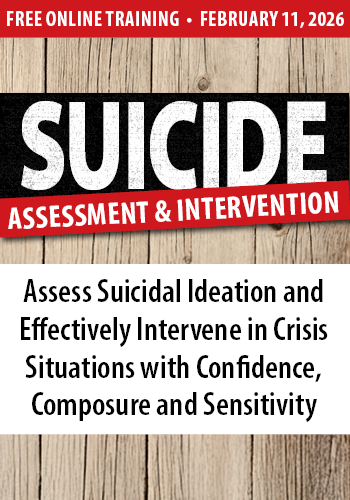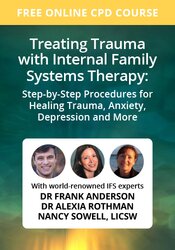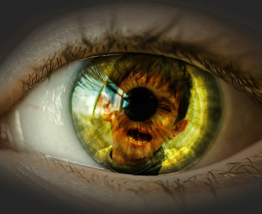Enrol in an online course today for flexible, self-paced learning—no fixed schedule required. Plus, enjoy lifetime access to course materials for convenient revisiting.
Schema Therapy for Trauma (5/5): Chair Work Techniques

In my last post Schema Therapy for Trauma (4/5): Imagery Techniques I focused on the use of imagery in schema therapy – one of three areas of ‘experiential’ techniques, to avoid what Fritz Perls, founder of Gestalt Therapy, called ‘aboutism’. Perls argued that just talking about a client’s problems was not sufficient to change them. Instead, they need powerful, emotionally activated experiences in the consulting room. And in schema therapy, we use relational, imagery and chair work techniques to create these emotion-focused, healing experiences for our clients.
Although chair work was not invented by Perls, he brought this highly creative set of techniques into mainstream psychotherapy, with his dramatic public demonstrations in the Sixties. When Jeffrey Young created schema therapy, he incorporated Gestalt techniques – particularly chair work – into his new model, recognising the power of these techniques to effect healing and change.
Dynamic use of chairs
One of the main areas in which schema therapists use chair work is to directly access and work with clients’ modes, which are distinct parts of the person, such as the Vulnerable Child or Critic. One example of this mode work is in helping clients overcome the detachment, dissociation and emotional avoidance so common in traumatised people. We identify these cognitive, emotional and behavioural strategies as the Detached Protector mode, which avoids emotionally arousing subjects; talks about upsetting situations in a detached, intellectual way; and often blocks therapy, to protect the client from feeling vulnerable or exposed.
Like most complex clients, Emma would ‘mode flip’ in-session, from a highly emotional part to one that was shut-down and numb. We named this part of her the Wall (actually the Detached Protector, but we use idiosyncratic names), as it blocked access to her emotions and Little Emma, which was the part of her that needed to feel and process her emotions. When I noticed Emma seeming detached in-session (or when I experienced the countertransference of feeling empty or disconnected), I asked whether the Wall was present. We then put this mode on a chair and the dialogue would go like this:
Therapist: Hello Wall. Why have you showed up today?
Emma/Wall: Because it was all getting too intense and Emma was about to cry.
T: Oh, that makes sense – I totally understand why you’re trying to look after her (validating this mode, which is just trying to protect a traumatised child part). But I’m wondering, what would be the worst thing about Emma crying? (accessing the fear that led her to detach).
E: She would feel really vulnerable.
T: And what would be the worst thing about that?
E: When she’s vulnerable, people hurt her.
T: I know, she has been hurt so many times, especially by mum and dad. But sometimes it’s good to think about the evidence – have I ever hurt her? Even once?
E: No… I guess not.
T: So maybe you could trust me to speak to her – just for a few minutes?
If the Wall gave me permission, I moved its chair back a bit, so it could observe and make sure Little Emma was safe. I then got another chair and asked her to ‘be’ Little Emma. This usually allowed her to access the emotions which the Wall had been blocking, to feel her sadness, cry and get soothed by me.
Healing Emma’s trauma
Using a combination of techniques like chair work, imagery rescripting and the therapy relationship, after two years of weekly sessions, Emma’s trauma was largely healed. She no longer cut herself, ate or drank to excess. Her attachment style was much more secure, so she was in a stable, long-term relationship with James, a kind man who treated her well. And although she still experienced occasional low mood, this did not spiral into depression. We worked on a number of emotion-regulation and self-soothing techniques that Emma’s Healthy Adult mode could use to help her when she was feeling low or upset.
It’s important to note that, with deeply traumatised clients, we should have realistic expectations about their goals for therapy. A whole range of factors can block the healing process, such as financial constraints limiting session numbers, temperament (which is often highly sensitive and emotional, making daily life challenging), or the dysfunctional family system which they must still find a way to navigate. But my aim is always to facilitate deep healing of a client’s trauma and painful schemas; to help them find a loving relationship; to significantly reduce or eliminate unhelpful ways of coping, such as bingeing or drinking; and to effect profound changes in their overall quality of life.
I feel blessed to have found a model, in schema therapy, which allows me to do that. Working with complex trauma is at the same time the most challenging and satisfying thing I have ever done – helping people heal the wounds of a destructive childhood is a daily miracle.
This case study is a composite of various clients – all names and identifying details have been changed.

















